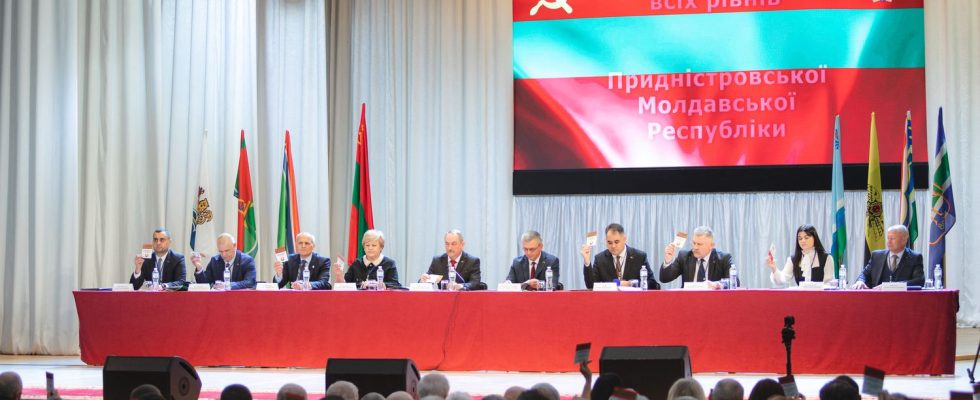This territory between Moldova and Ukraine proclaimed itself independent in 1991, but has never been recognized. Today he considers himself under “increased pressure” from Moldova and is asking for help from Russia.
Published
Reading time: 2 min

Will the war in Ukraine be exported to Moldova? The separatists of Transnistria, a pro-Russian separatist region of Moldova, demand on Wednesday February 28 the “protection” of Russia. MPs from Transnistria called on the Russian Parliament to “implement measures to protect” this small territory where live “more than 220 000 Russian citizens” facing “increased pressure from Moldova”. Which is reminiscent of what happened two years ago in Donbass, in eastern Ukraine.
Transnistria is a small strip of territory approximately 200 kilometers long and barely 20 kilometers wide, on the shore left of Dniester, where just over 465,000 people live. It is located on the border between Moldova and Ukraine, not far from the port of Odessa which overlooks the Black Sea. This region of Moldova has experienced tensions for more than thirty years, since it seceded in 1992.
A secession, then a civil war
At the time, the USSR was disappearing and several former Soviet bloc countries were moving closer to the West. Moldova thus declared its independence in August 1991 and left the USSR. Transnistria, or the Moldovan Republic of the Dniester, then unilaterally declared its independence in December 1991 in order to remain within the fold of Moscow. The secession provoked a war in the east of the country, known as the Dniester War. The conflict left several hundred dead and ended in July 1992 after the intervention of the Russian army. Even today, nearly 1,500 Russian soldiers are stationed in the region, officially on a peacekeeping mission.
This secession from Moldova has never been recognized by the international community, including Russia. Today, the Republic has its own capital, Tiraspol, its government, its army and its currency, the Transnistrian ruble. But she is not a State under international law, and remains de jure a autonomous region located within the internationally recognized borders of Moldova. And this even if Moldova no longer has authority over this territory.
A request for attachment to Russia
Beyond the presence of Russian soldiers, Transnistria has remained very close to Moscow. Firstly by the language, since the majority of its inhabitants speak Russian and use the Cyrillic alphabet, which is not the case for the Romanian-speaking inhabitants of Moldova. The region also benefits from Russian gas, delivered free of charge. In 2006, the pro-Russian local authorities of Transnistria even organized a referendum for or against the annexation of the region to Russia. 97% of residents voted in favor, but the result was not recognized by the international community.
The war in Ukraine over the past two years has increased tensions. On the one hand, Ukraine fears that Russia will take advantage of its military presence in the region to open a new front in Ukraine, to the southwest. And on the other, the pro-Russian authorities in Transnistria say they feel threatened by kyiv and that is why they are asking Moscow for protection. This rhetoric is very close to that of the pro-Russian separatists in Donbass, in eastern Ukraine. It was when they requested Russian intervention that the war broke out.
